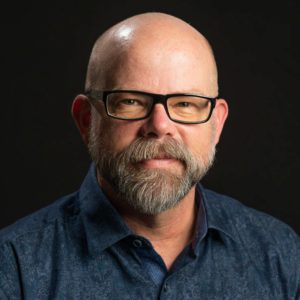The Santa Barbara Foundation is Strengthening Nonprofits at the Board Leadership Institute

Our culture is a little ambivalent about how people work together. We praise teamwork but vilify committees (as in, “A camel is a horse designed by committee.”).
The Board Leadership Institute (BLI), a six-month certificate program in the Center for Nonprofit Leadership (CNL) at Cal Lutheran University, is not ambivalent: attendance requires the participation of both executive and board leadership, learning side by side for six months. “The relationship between a nonprofit’s executive director and board president says a lot about a nonprofit’s health,” said Gary Clark, Director of the Santa Barbara Foundation Collaboration for Social Impact.
“A lot of these organizations were founded around a kitchen table, or in a church basement, or a conference room, trying to solve a community problem,” said Dena Jenson, Director of the Center for Nonprofit Leadership. “Everyone had a 110% passion for the world to be a better place. But very few of us went off to How-to-Run-a-Nonprofit-Business school. Some of us have professional training in nonprofit management, but many are accidental nonprofit leaders. A lot of business acumen is required to take a nonprofit organization through its lifecycles.”

In 2022 the Santa Barbara Foundation (SBF) revived a partnership with CNL to virtually engage a large cohort of Santa Barbara County nonprofit leaders through the Board Leadership Institute. “The pandemic built a level of comfort working remotely,” said Dena. “Gary Clark approached us about creating a dedicated, very focused program that was homegrown.” It was a good match. The Foundation took a strong role in recruiting applicants, resulting in far more applications than anticipated and adding some applicants to a second cohort that began later in the year.
Based on feedback from local nonprofit leaders, Gary was looking for educational and teambuilding opportunities introducing the ethos of DEIA: Diversity, Equity, Inclusion, and Access. Dena and her team had been working on just such a program.
“We started that evolution about 16 months earlier, beginning with our curriculum. We heard the call for reconciliation and greater attention to representation, equity practices, diversity in the boardroom, and we turned the mirror on ourselves as nonprofit leaders and nonprofit organizations, and we are now prioritizing how diversity, equity, and inclusion shows up in our capacity-building work.
BLI added new program elements, including a module on Power and Privilege, discussing how inequity influences relationships between board and staff and community. “That module requires a really high degree of self-reflection.” Other new elements included a section on strategic recruitment of board members. “Research backs up that there is a higher level of engagement and performance in the boardroom when it is not the same old cast of characters. How do we bring in lived experience, professional experience, educational background, and subject matter expertise?”
While there may be nothing more American than demanding representation (we fought a whole revolution over it), achieving it in the boardroom can still be fraught. Dena suggests it is not just a good idea, but necessary: “When you’re doing community change work, there’s a guiding principle from the disability rights community: ‘nothing about us without us.’”
The six-month duration of the Board Leadership Institute builds bonds between participants and a shared language within the network of local nonprofit leaders. Even experienced executives and board members were impressed by “surprisingly new” information. As Shakira Miracle, Executive Director of Santa Barbara County Food Action Network (FAN), points out, “there was a broad range of board experience in the cohort, and there was learning for everyone.” She adds high praise: “Ultimately, it’s actionable information.”
For example, FAN will include training on financial statements for the incoming Board after seeing even seasoned board members confess to gaps in their understanding. “This also gets FAN on the right footing for compliance,” adds Shakira, referring to another fraught topic for untrained or inexperienced board members. “You want people to feel empowered, you want them to feel validated, and you want them to be informed,” not least because, “they are responsible for the fiduciary health and activities of the organization.” Financial statement training will now also be part of new board orientation.
Asked what she would want someone considering attending the Board Leadership Institute to know, Shakira offered, “I would want them to know you get concrete tools. You get relevant tools. You get relevant information. And you get all those things from area experts. The program doesn’t stop at the last training. I’ve found Cal Lutheran, Santa Barbara Foundation’s Collaboration for Social Impact, and the Institute’s facilitators ready and willing to provide ongoing support related to the information and learning from the program. “
According to CSI Director Gary Clark, the Santa Barbara Foundation expects to work with the Center for Nonprofit Leadership to offer the Board Leadership Institute again next year. For more information about the Collaboration for Social Impact, visit SBFoundation.org/collaboration-for-social-impact/.